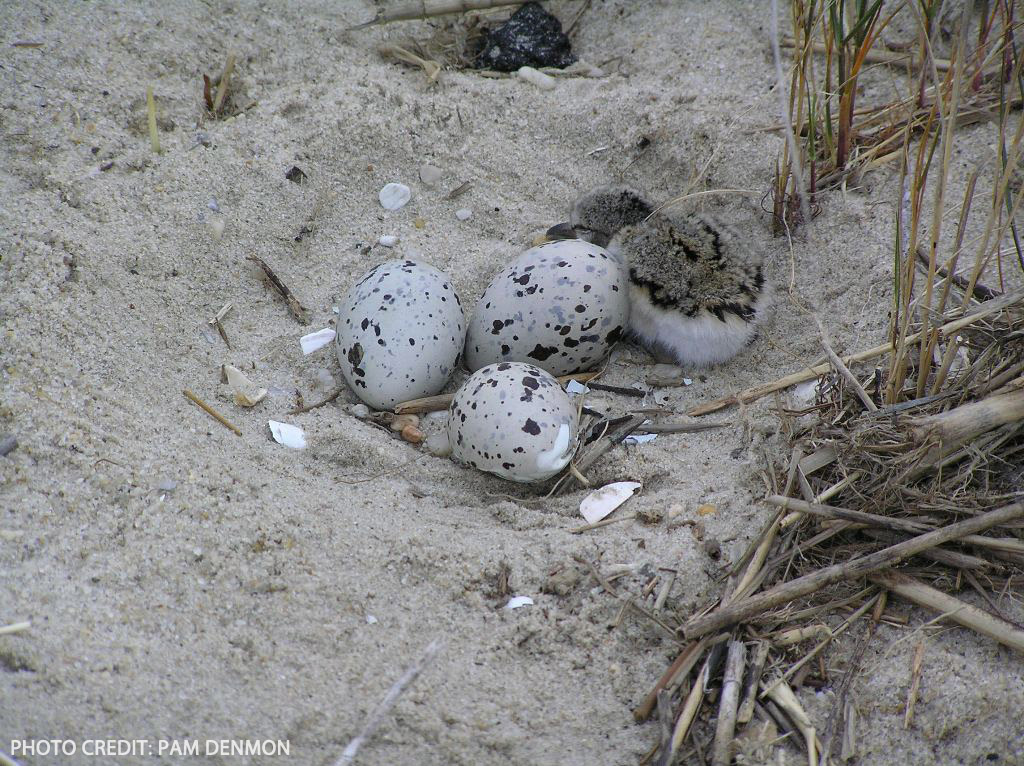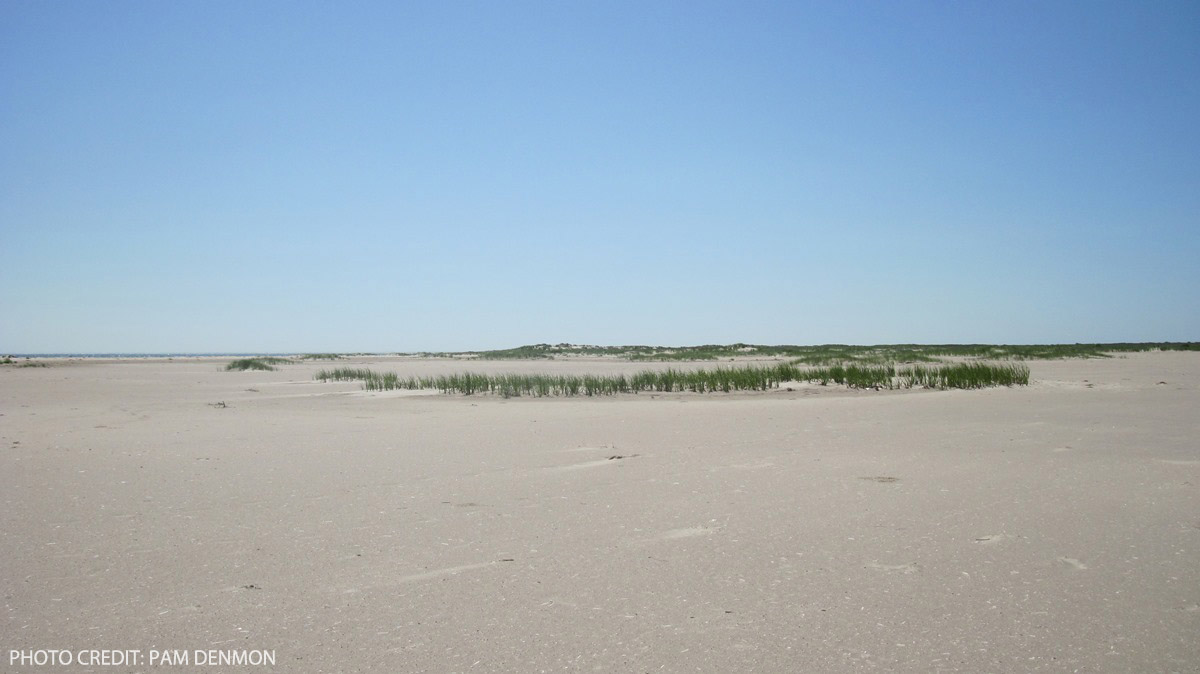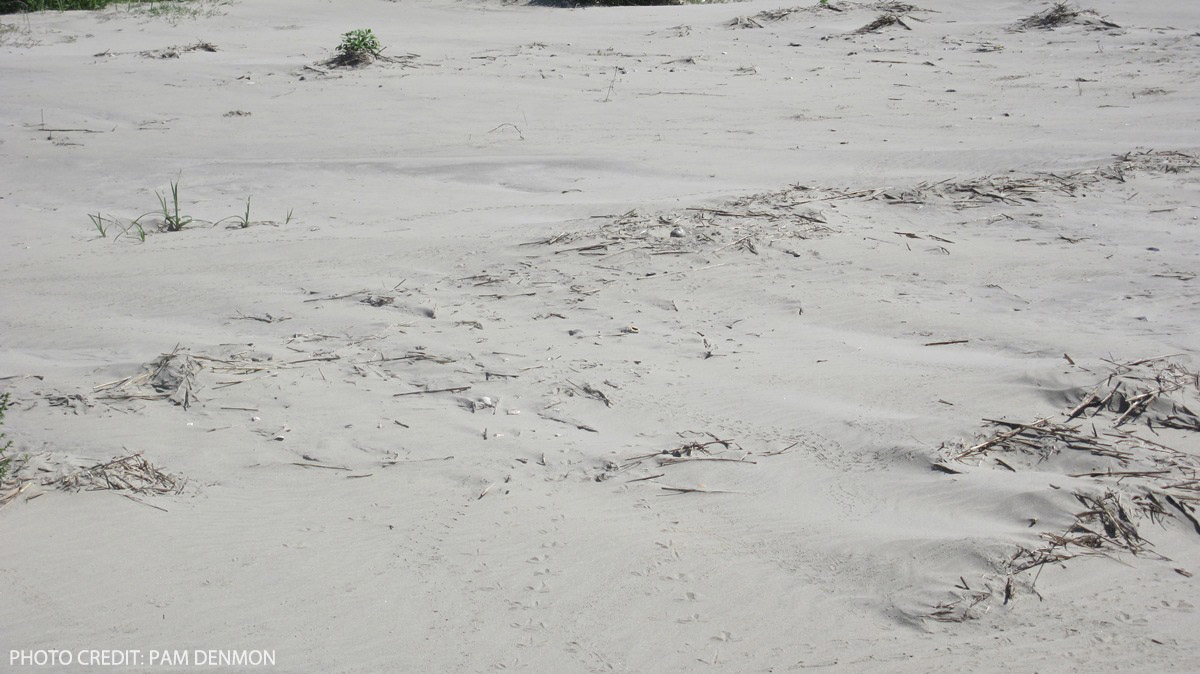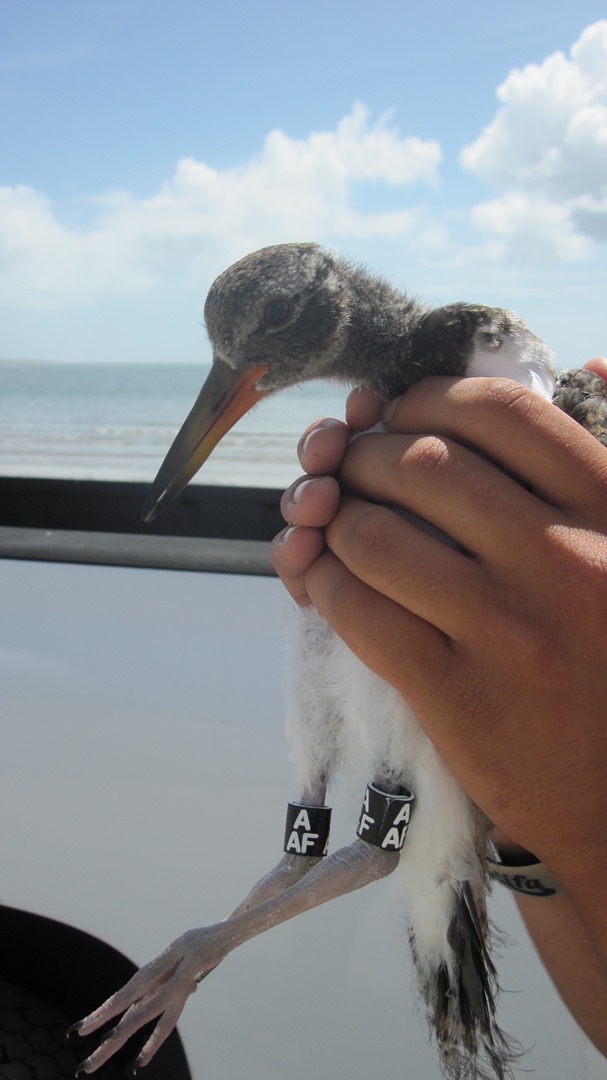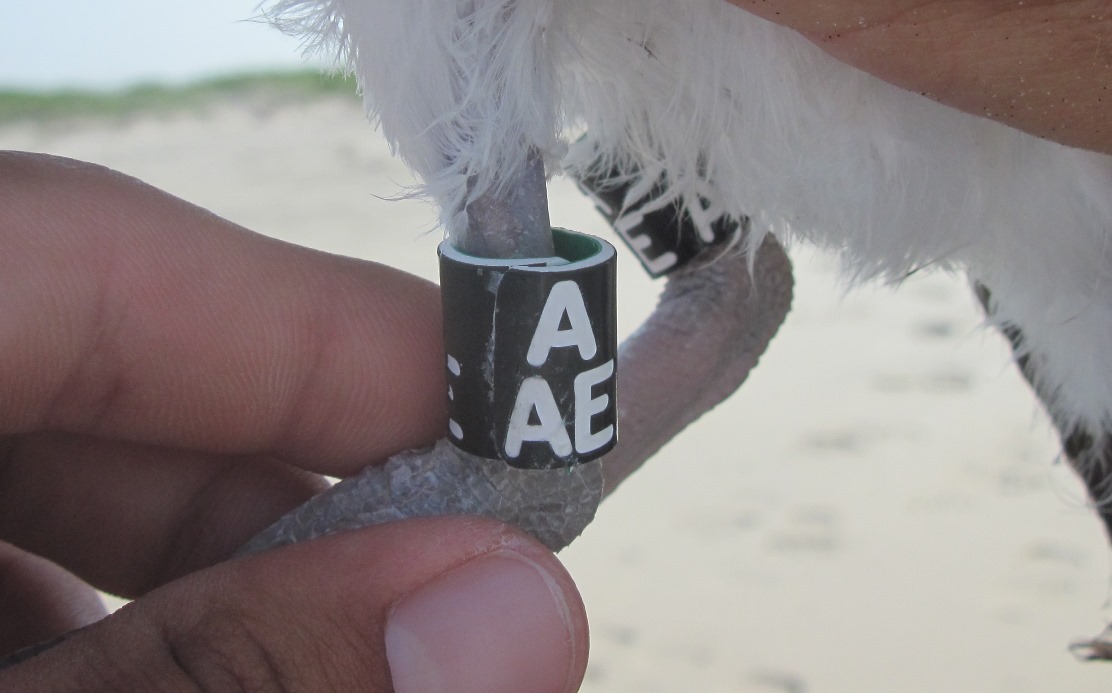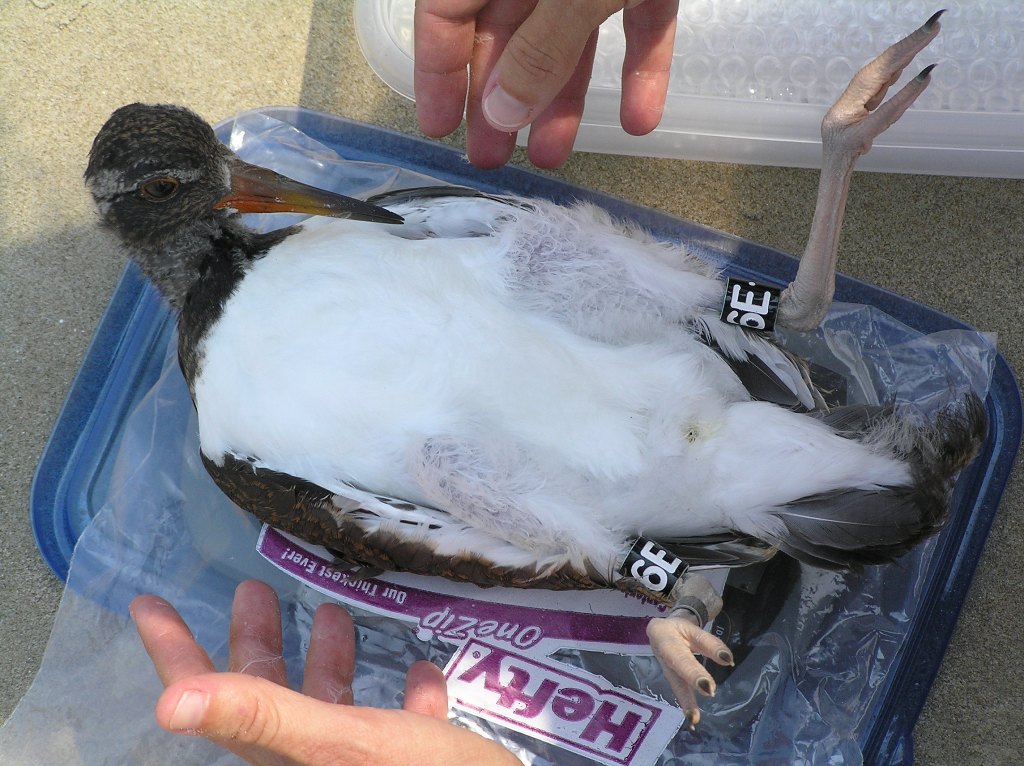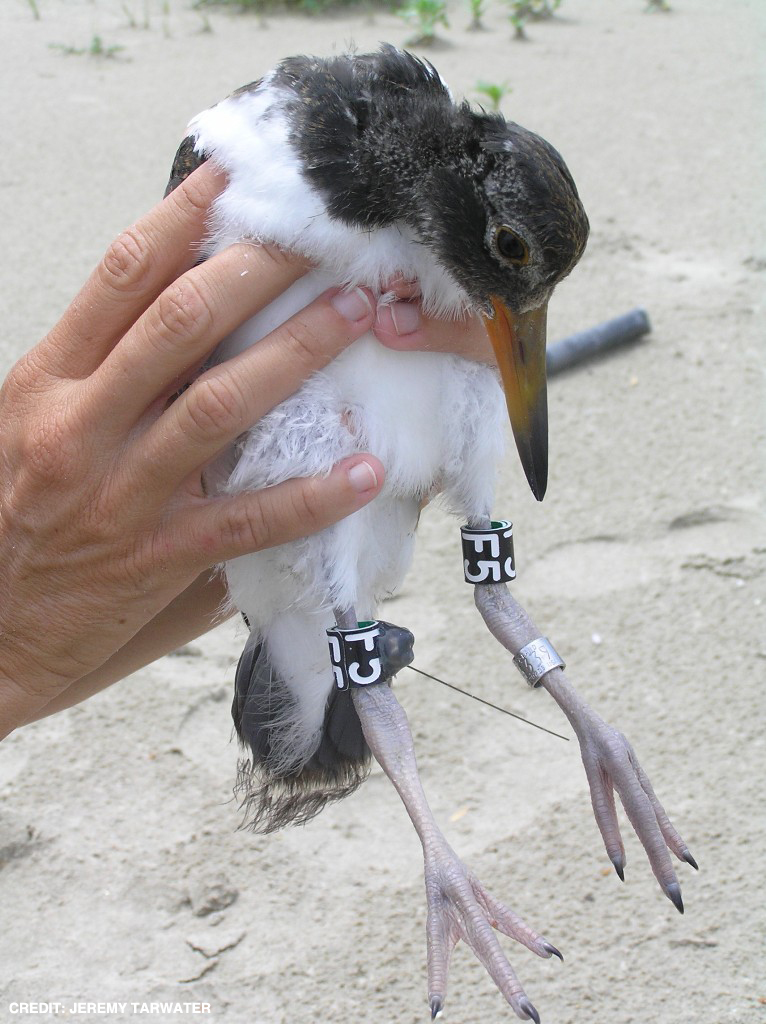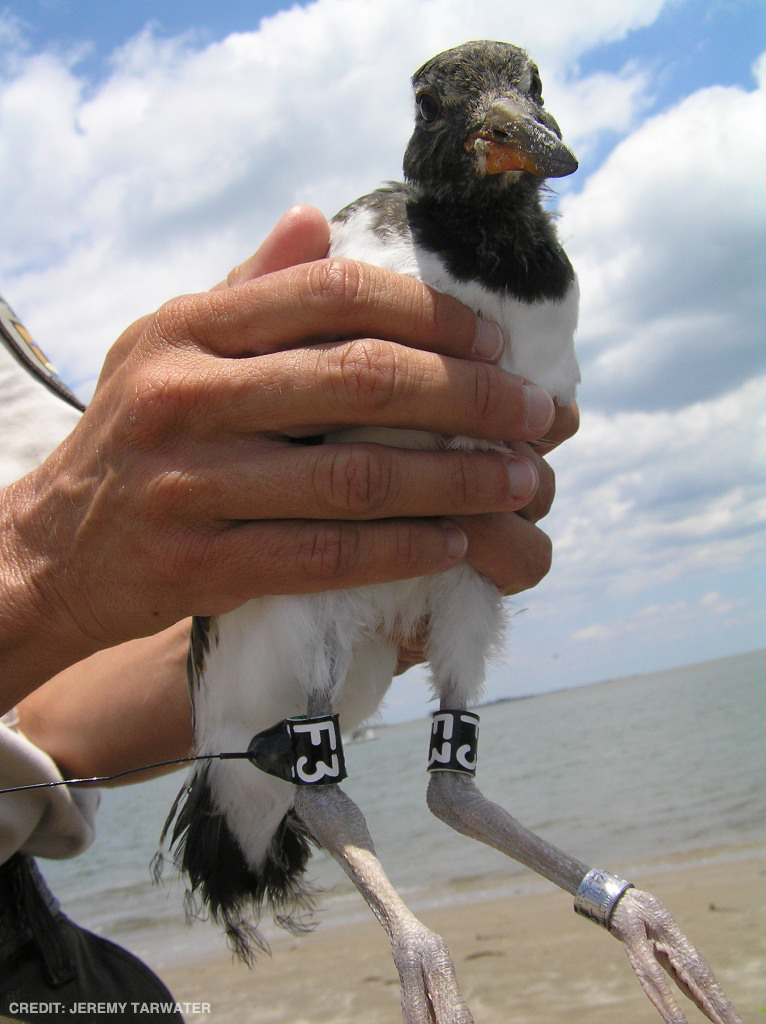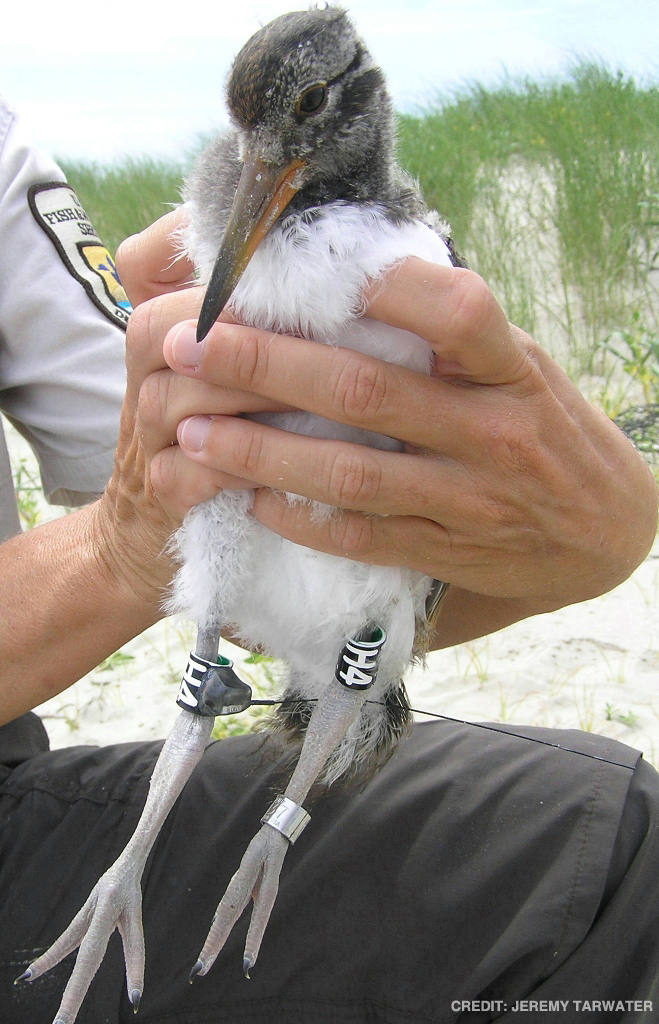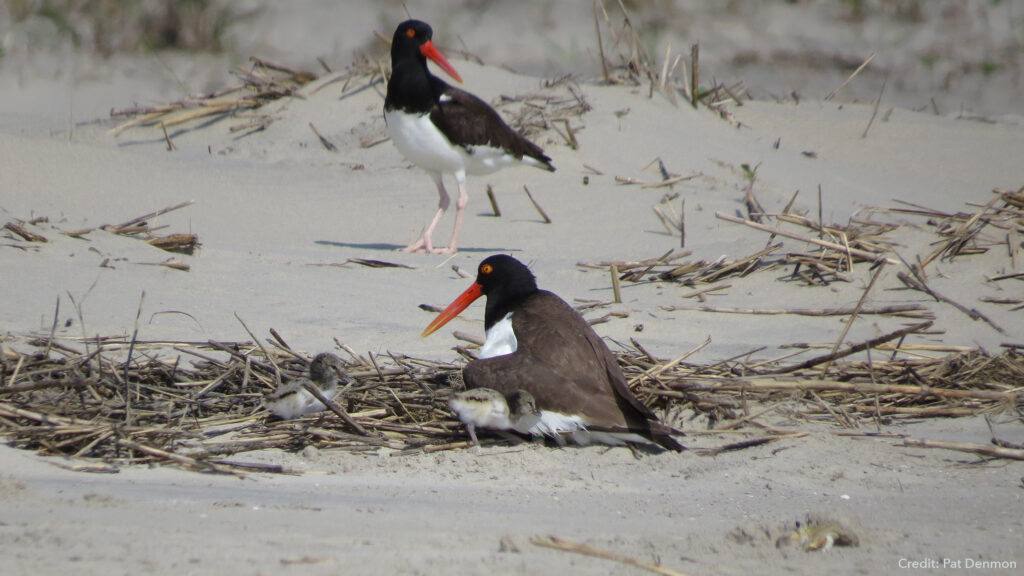
AMOY Research & Monitoring in Virginia
Research
Annual Breeding Surveys
Since 2001, The Nature Conservancy Virginia Coast Reserve (TNC) and the Virginia Department of Game and Inland Fisheries (VDGIF) have combined resources in order to conduct Piping Plover, Wilson’s Plover and American Oystercatcher surveys along the coast of Virginia. VDGIF, TNC, USFWS and other partners have conducted Piping Plover surveys along the Virginia coast since 1986. Wilson’s Plovers were added to the annual survey effort in 1989. In 2001, plover survey participants were asked to record breeding American Oystercatchers as well since the three species use the same breeding habitat on the barrier islands. Combining the surveys of the three solitary nesters reduces the amount of disturbance to the nesting areas, is an efficient use of resources and will continue in the future.
Statewide breeding surveys
2003 represents the first year Virginia has attempted to obtain a statewide breeding population estimate for oystercatchers. This was achieved by combining data collected from the annual plover/oystercatcher survey described above, the Eastern Shore Lagoon System oystercatcher productivity study described below, breeding black duck productivity surveys in the lower Chesapeake Bay, and the 2003 coastal plain waterbird survey. This effort was repeated in 2008 and we plan to replicate this large-scale effort every five years to better assess statewide trends in the distribution and abundance of breeding oystercatchers in Virginia.
Winter roost surveys
Since 1999, winter surveys on the Eastern Shore have revealed that the marshes of the lagoon system provide wintering habitat for approximately 2,000 American Oystercatchers. We anticipate continuing these surveys annually to help track winter population trends in Virginia.
Productivity on Virginia’s Barrier Islands and Predator Management
Since 2002, we have monitored oystercatcher productivity on Virginia’s barrier islands. We have focused our efforts on islands with and without mammalian predator management programs in order to assess the effectiveness of these programs for increasing oystercatcher reproductive success. These data also contribute to baseline productivity information for the state. We anticipate continuing these efforts in conjunction with predator management efforts.
Productivity in the marshes of the Eastern Shore Lagoon System
Recent breeding surveys in the marshes of the lagoon system of the Eastern Shore has revealed that the habitat supports approximately 30% of Virginia’s breeding population. Little is known about the long term success of birds breeding in this habitat, although breeding data collected since 2003 shows reproductive success is highly variable and high failure was documented during the 2003 breeding season. We anticipate continuing to monitor birds breeding in the lagoon system in order to assess their long-term productivity and major threats to breeding.
Productivity on Chesapeake Bay Islands
From 2009 – 2011, the Virginia Department of Game and Inland Fisheries monitored oystercatcher productivity on nine islands located in the eastern half of the lower Chesapeake Bay. This area of the Bay supports approximately 14% of the Commonwealth’s oystercatcher breeding population and harbors over 90% of the breeding pairs in the Chesapeake Bay. No prior attempts have been made to measure oystercatcher breeding success in the Chesapeake Bay and by filling this data gap, we are able to compare reproductive success among the three most important oystercatcher breeding areas in Virginia; the barrier island chain, the seaside lagoon system and the Chesapeake Bay. Preliminary analyses suggest that the current reproductive output of Bay island population is above the minimum value needed to maintain a stable population. However, given the high erosion rates of these exposed sites, sea level rise and increased storm frequency will likely pose a more immediate threat to the Bay population than to those birds breeding on the barrier islands. Due to a lack of resources and shift in priorities, we will no longer conduct bayside studies on an annual basis, but hope to repeat these efforts every three to five years.
Habitat dynamics
We have been exploring questions concerning the dynamic nature of the barrier islands that oystercatchers use for breeding. These islands are constantly re-worked and changed by the forces of the ocean, storms, sediment supply and sea level rise. These forces are responsible for maintaining the type of habitat that oystercatchers require for breeding, but are also a major cause of reproductive failure. There is growing concern over what the impacts of sea level rise will be on the geomorphology of Virginia’s barrier island chain and the future of beach nesting bird species such as oystercatchers that utilize these island habitats. As technological advances are made in quantifying changes in island size, shape, elevation and movement, we plan to collect concurrent breeding distribution and productivity data to help track oystercatcher responses to changes in habitat availability and suitability.
Banding
Color banding
Researchers have not banded American Oystercatchers in Virginia since the early 1980’s. Responding to the overwhelming interest and call to mark oystercatchers with unique color bands, we began banding adults and young in 2003. Since then banding efforts have greatly increased and are being conducted on virtually all sites monitored for productivity. We anticipate continuing with these efforts as resources allow in order to gain a better understanding of important demographic parameters such as juvenile and sub-adult survival.
The Excel file (under Resources in sidebar) contains a current list of color band combinations and re-sightings for birds banded in Virginia. Banding data were provided by The Nature Conservancy and the Virginia Department of Game and Inland Fisheries. This dataset should not be published or distributed without permission. For more information contact Alexandra Wilke or Ruth Boettcher.
American Oystercatcher Re-sighting Surveys
In 2004, The Nature Conservancy’s Virginia Coast Reserve and the Virginia Department of Game and Inland Fisheries began conducting systematic surveys for banded oystercatchers during the non-breeding season in Virginia’s seaside lagoon system. Since then, biologists from Eastern Shore of Virginia NWR and Chincoteague NWR have participated in this effort which has enabled us to investigate various demographic and life history parameters including survival rates, site fidelity patterns and migration/dispersal patterns. We anticipate continuing these surveys as resources and staff allow.
Virginia Banding Schemes
There may be occasional variation in timing and leg placement of banding schemes.
2013-present: Duplicate black bands with white triangle-code configuration (three white engraved horizontally-oriented letters (no codes with numbers) with one character above two characters) on upper legs; single metal band on either lower leg.
-OR-
Duplicate black bands with white vertical code (two white engraved vertically-oriented letters/numbers) on upper legs.
2010–2013: Duplicate Black bands with 2 White engraved vertically-oriented letters/numbers on upper legs.
2004–2012: Duplicate Black bands with 2 White engraved horizontally-oriented letters/numbers on upper legs.
2003: a combination of plain, wrap around bands. From an old report: “Each chick received a red color band placed over a U.S. Fish and Wildlife Service issued metal band on its lower right leg, a red color band placed over a blue color band on its upper right leg and either one color band on its upper left leg or a combination of color bands on its lower and upper left leg.”
View Historical Banding Information (PDF).
Virginia Contacts
- Barry Truitt – The Nature Conservancy Virginia Coast Reserve
- Bryan Watts – Center for Conservation Biology – College of William & Mary and Virginia Commonwealth University
- Alexandra Wilke – The Nature Conservancy Virginia Coast Reserve
- Ruth Boettcher – Virginia Department of Game and Inland Fisheries
- Pamela Denmon – Eastern Shore of Virginia National Wildlife Refuge
- Kevin Holcomb – Chincoteague National Wildlife Refuge
Virginia Participants
- Center for Conservation Biology – College of William & Mary
- Chincoteague National Wildlife Refuge
- Dept. of Biology – College of William and Mary
- Eastern Shore of Virginia National Wildlife Refuge
- Nature Conservancy – Virginia Coast Reserve
- VA Dept. of Game and Inland Fisheries

